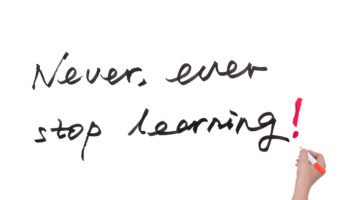Deirdre Manley
The CLASS is multi-faceted and complex. It’s no surprise new and old CLASS participants carry around and pass on misconceptions about it. Here are four common misconceptions about CLASS and ways we can address them during and after trainings.
- The trainer is the source of all knowledge
Participants might think that trainers will proclaim the truth and that they will simply absorb it and write it down. The challenge here is that they think that if a trainer doesn’t tell them the answers, they can’t possibly know them. Trainers should encourage them to think about it in this way: the role of the trainer is a learning coach. They assist in the learning process and evaluate understanding. The best way to find answers to questions about the CLASS is to use the manual.
- Reading and comprehension is not relevant when understanding CLASS
During and after a training, trainers often remind participants about the importance of thoroughly reading the entire CLASS Manual before taking the reliability test. Some participants think that learning how to identify quality interactions happens a lot faster than it does. Understanding what to look for when observing effective teacher-student interactions starts with reading and comprehending the content outlined in the manual. There are no shortcuts when it comes to understanding what CLASS measures and how to identify these interactions.
Participants might also assume they can get what they need out of a quick read through of the “Face Pages.” Or, that it’s not a problem to wait until the week before the reliability test window closes to review the information from their training (Master Code Justifications, training videos, exemplar clips, training notes, Participant Guide) and take the test in one sitting. Interacting with the CLASS manual and notes and reviewing exemplar videos thoroughly prior to testing is important to gaining a better understanding of what the CLASS measures.
- Implementing CLASS
The purpose of the Observation training is to teach participants to code so they can measure teacher-student interactions in their program. However, collecting data will not lead to increased CLASS scores. Improvement in CLASS scores only comes as a result of intensive CLASS-based PD. It’s a continuous process that requires the hard work and effort of everyone involved.
- Learning CLASS is Easy
Learning the CLASS can be hard. And in truth, the more experience someone has, the more difficult it can be. Participants should come to the training expecting to be challenged and to work hard.
It takes a lot of hard work and time to become comfortable with the CLASS. So it’s no wonder participants pick up common misconceptions about it along the way. What other CLASS misconceptions have you run into? How can we address them?
 Deirdre Manley joined the Teachstone team in 2015. She currently resides in Lake Mary, FL and trains on Pre-K tools. Deirdre loves research focused on brain development and how quality interactions positively impacts cognitive/intellectual development. Prior to joining the Teachstone team, Deirdre was an EC Specialist where she provided training and technical assistance in School Readiness, Data Analysis, Parent, Family and Community Engagement, Practice Based Coaching and Pre-K CLASS to the Office of Head Start grantees. During her free time, she likes to run long distances while dressed in a tutu and tiara.
Deirdre Manley joined the Teachstone team in 2015. She currently resides in Lake Mary, FL and trains on Pre-K tools. Deirdre loves research focused on brain development and how quality interactions positively impacts cognitive/intellectual development. Prior to joining the Teachstone team, Deirdre was an EC Specialist where she provided training and technical assistance in School Readiness, Data Analysis, Parent, Family and Community Engagement, Practice Based Coaching and Pre-K CLASS to the Office of Head Start grantees. During her free time, she likes to run long distances while dressed in a tutu and tiara.



